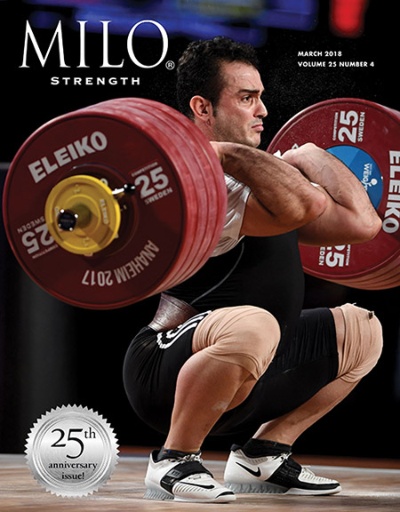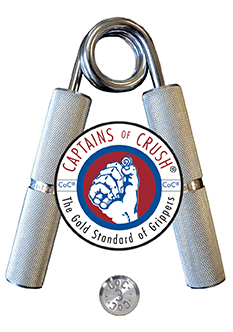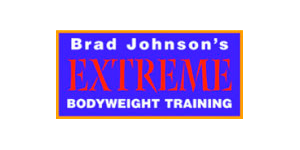
If you have not already learned this about me, I like training my grip and upper body simultaneously by doing pull-ups from a variety of odd objects. The biggest obstacle has been figuring how to hang the objects so that I can do pull-ups from them. I was looking through the recent IronMind catalog and saw the Daisy Chains. It said that, "a pair of daisy chains can be the connecting link between all manner of training devices and weight—your imagination is the limit." I saw the potential of the Daisy Chains to hang many objects from my rafters. This month's exercise is just one of the many ideas that I came up with.
I have levered sledgehammers for improving wrist strength and pounded used tires with sledgehammers for the conditioning benefits, but I always thought that the heads of the hammers could become valuable grip training tools. I decided to hang the sledgehammer from my rafters with a pair of Daisy Chains. I hitched the end of the Daisy Chain around the handle at a point where the sledgehammer is balanced horizontally and then clipped the other end of the chain to an eye bolt attached to my rafters. It worked great! I'll never forget the look on my wife's face when she saw the sledgehammer hanging in the laundry room. She just shook her head and walked away.
I discovered a couple of different types of pull-ups that could be done from the sledgehammer. I grabbed the hammer head with one hand and the handle with the other hand and did pull-ups. 
This method works the support/crush grip of the hand holding on to the hammer head. I then tried a pull-up by grabbing the handle with one hand and the hammer head underneath with the other hand with a hub-style pinch grip. 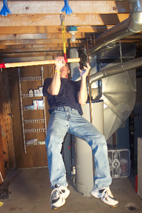

If you are not presently able to pull yourself up with your entire body weight, you can decrease the percentage of your body weight that you are pulling by using longer chains and lowering the baseballs closer to the floor and do body rows.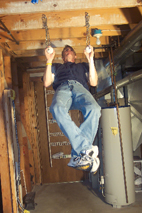

A body row is basically a reverse push-up. Initially hang the baseballs at a height where if you lay on your back with your chest directly underneath them and straighten your arms, you will barely be able to reach the baseballs. Pull your chest up to the baseballs and keep your body straight. It helps to imagine that your body is a board. If this is still too hard, you can raise the height of the baseballs. The higher the baseballs, provided that your feet are still on the ground, the lower the percentage of your body weight that you are required to pull.
Continue performing body rows until you can do a baseball pull-up with your entire body weight. If baseball pull-ups become too easy, you can increase the challenge in several ways:
• Add weight to your body.
• Do offset pull-ups by pulling your body towards one arm. Use the other arm only as much as necessary. You can even work towards a one arm baseball pull-up.
• Use softballs instead of baseballs. The softball will require more of an open hand which makes the grip more difficult.
Enjoy.








